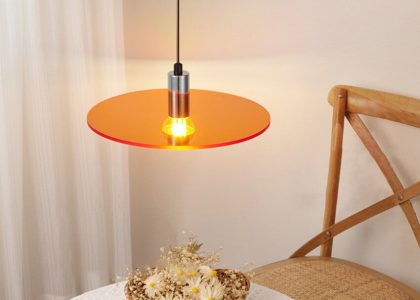Introduction
Lighting is an essential element in any space as it brings not only functionality but also ambiance. When it comes to the lounge and dining room, the right lighting can elevate the mood of the room and provide a relaxing and welcoming atmosphere for you and your guests. In this article, we will explore the different types of lights that work best in the lounge and dining room, and how to use them to create a well-lit and inviting space.
Types of Lights
The three main types of lights that work best in the lounge and dining room are ambient, task, and accent lighting.
Ambient Lighting
Ambient lighting sets the tone for the entire room and provides overall illumination. This type of lighting is usually achieved through the use of ceiling lights or wall-mounted sconces. Recessed lighting is also a great option for ambient lighting as it provides subtle and even illumination throughout the room.
Task Lighting
Task lighting is used to illuminate specific areas of the room where activities such as reading or cooking take place. This can be achieved through the use of table lamps, floor lamps, or pendant lights that are strategically placed to light up the desired area.
Accent Lighting
Accent lighting is used to highlight specific features in the lounge and dining room such as artwork or architectural features. This type of lighting is usually achieved through the use of wall-mounted uplights or spotlights.
Choosing the Right Lights
Choosing the right lights for your lounge and dining room depends on several factors such as the size of the room, ceiling height, and personal preference.
Size of the Room
The size of the room determines the number and placement of lights needed. For larger rooms, multiple sources of ambient lighting such as wall-mounted sconces and recessed lights may be necessary. Smaller rooms, on the other hand, may only require a single overhead light and a few strategically placed lamps.
Ceiling Height
The height of the ceiling also affects the type of light that works best in the room. For higher ceilings, pendant lights and chandeliers work well in providing both ambient and accent lighting. Lower ceilings, on the other hand, may require flush-mounted or semi-flush mounted ceiling lights.
Personal Preference
Personal preference plays a crucial role in choosing the right lights for your lounge and dining room. Do you want a warm and cozy atmosphere or a bright and modern one? Do you prefer traditional or contemporary styles? These factors should be considered when selecting the type of light that will work best in the room.
Light Placement
Proper light placement is vital in creating a well-lit and inviting space. Here are some tips on how to place your lights:
Ambient Lighting
Ambient lighting should be evenly distributed throughout the room to create a balanced and comfortable atmosphere. Ceiling lights should be placed in the center of the room, while wall-mounted sconces should be evenly spaced around the perimeter of the room.
Task Lighting
Task lighting should be placed strategically to light up specific areas of the room. For example, a table lamp should be placed on a side table next to a chair for reading, while a pendant light can be placed above the dining table to provide ample light for eating.
Accent Lighting
Accent lighting should be placed to highlight specific features in the room, such as artwork or architectural features. Wall-mounted uplights or spotlights can be placed to cast light upward or downward, depending on the desired effect.
Conclusion
In conclusion, lighting plays a crucial role in creating a well-lit and inviting space in your lounge and dining room. By understanding the different types of lights and how to use them, you can create a comfortable and welcoming atmosphere for you and your guests. Remember to consider the size of the room, ceiling height, and personal preference when selecting the right lights, and place them properly to achieve the best effect.


